You can use defaultdict to keep occurrences and values:
try:
d = defaultdict(list)
for row, val in df.iterrows():
for col in range(len(df.columns)):
if val[col] != 0:
d[row+1].append((col+1, val[col]))
for i in range(max(len(x) for x in d.values())):
df['occurrence ' + str(i+1)] = ['name_' + str(list(d.values())[j][i][0]) if i<len(d[j+1]) else None for j in range(len(d))]
df['value ' + str(i+1)] = [str(list(d.values())[j][i][1]) if i<len(d[j+1]) else None for j in range(len(d))]
to replicate everything:
import pandas as pd
from collections import defaultdict
data = {'name_1': {0: 0, 1: 0, 2: 100, 3: 10, 4: 0, 5: 50},
'name_2': {0: 100, 1: 0, 2: 0, 3: 0, 4: 0, 5: 0},
'name_3': {0: 0, 1: 50, 2: 0, 3: 50, 4: 0, 5: 0},
'name_4': {0: 0, 1: 50, 2: 0, 3: 0, 4: 0, 5: 0},
'name_5': {0: 0, 1: 0, 2: 0, 3: 40, 4: 100, 5: 0},
'name_6': {0: 0, 1: 0, 2: 0, 3: 0, 4: 0, 5: 50}}
df = pd.DataFrame(data)
d = defaultdict(list)
for row, val in df.iterrows():
for col in range(len(df.columns)):
if val[col] != 0:
d[row+1].append((col+1, val[col]))
for i in range(max(len(x) for x in d.values())):
df['occurrence ' + str(i+1)] = ['name_' + str(list(d.values())[j][i][0]) if i<len(d[j+1]) else None for j in range(len(d))]
df['value ' + str(i+1)] = [str(list(d.values())[j][i][1]) if i<len(d[j+1]) else None for j in range(len(d))]
updated replication based on OP's comments
import pandas as pd
from collections import defaultdict
data = {'doprava': {0: 0, 1: 0, 2: 100, 3: 10, 4: 0, 5: 50},
'krajinna_produkce': {0: 100, 1: 0, 2: 0, 3: 0, 4: 0, 5: 0},
'krajinne': {0: 0, 1: 50, 2: 0, 3: 50, 4: 0, 5: 0},
'obytne': {0: 0, 1: 50, 2: 0, 3: 0, 4: 0, 5: 0},
'produkcni': {0: 0, 1: 0, 2: 0, 3: 40, 4: 100, 5: 0},
'rekreacni': {0: 0, 1: 0, 2: 0, 3: 0, 4: 0, 5: 50}}
df = pd.DataFrame(data)
d = defaultdict(list)
for row, val in df[['doprava', 'krajinna_produkce', 'krajinne', 'obytne', \
'produkcni', 'rekreacni']].iterrows():
for col in range(len(df.columns)):
if val[col] != 0:
d[row+1].append((val.index[col], val[col]))
for i in range(max(len(x) for x in d.values())):
df['occurrence ' + str(i+1)] = [str(list(d.values())[j][i][0]) \
if i<len(d[j+1]) else None for j in range(len(d))]
df['value ' + str(i+1)] = [str(list(d.values())[j][i][1]) \
if i<len(d[j+1]) else None for j in range(len(d))]
output:
| doprava |
krajinna_produkce |
krajinne |
obytne |
produkcni |
rekreacni |
occurrence 1 |
value 1 |
occurrence 2 |
value 2 |
occurrence 3 |
value 3 |
| 0 |
100 |
0 |
0 |
0 |
0 |
krajinna_produkce |
100 |
|
|
|
|
| 0 |
0 |
50 |
50 |
0 |
0 |
krajinne |
50 |
obytne |
50 |
|
|
| 100 |
0 |
0 |
0 |
0 |
0 |
doprava |
100 |
|
|
|
|
| 10 |
0 |
50 |
0 |
40 |
0 |
doprava |
10 |
krajinne |
50 |
produkcni |
40 |
| 0 |
0 |
0 |
0 |
100 |
0 |
produkcni |
100 |
|
|
|
|
| 50 |
0 |
0 |
0 |
0 |
50 |
doprava |
50 |
rekreacni |
50 |
|
|

